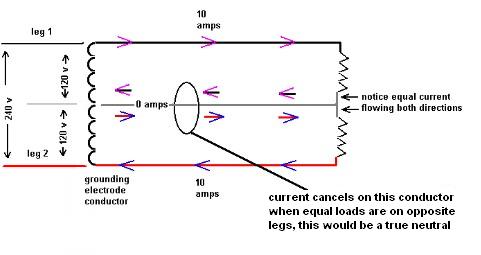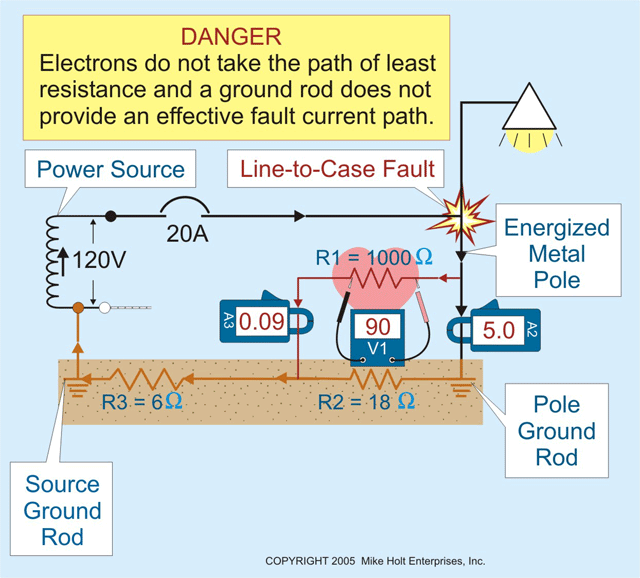peter d
Senior Member
- Location
- New England
Re: bonding metal street light poles
The person would be safer without the ground rod because the earth he is standing on would not be live. He would still receive a dangerous shock or be killed if he touched the pole and had a good path to a grounded surface via his body. The ground rod without a low impedance path back to the source elevates the touch potential as shown in the illustration.
First of all, if one of the conductors is intentionally connected to earth, it becomes a grounded conductor. A true neutral is only present in very specific situations. A common 120 volt system with a hot and grounded conductor does not contain a "neutral."Originally posted by TOMWELDS:
In regards to a neutral being neutral (L), If 2 wires come off a transformers secondary, what made the neutral a neutral? The fact that one of the wire's was grounded. Otherwise it's just another hot wire (like 240volts).
Im still studying the animation. It seems there's more to the picture than first glance. Imediatly im thinking what would happen to that fellow if there was NO ground rod. Also, picture the same scenario with a house electrical system.
The person would be safer without the ground rod because the earth he is standing on would not be live. He would still receive a dangerous shock or be killed if he touched the pole and had a good path to a grounded surface via his body. The ground rod without a low impedance path back to the source elevates the touch potential as shown in the illustration.



